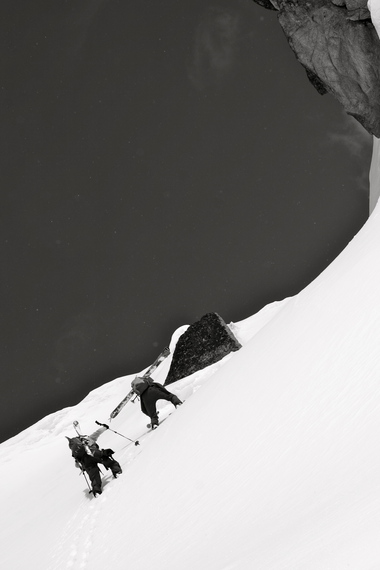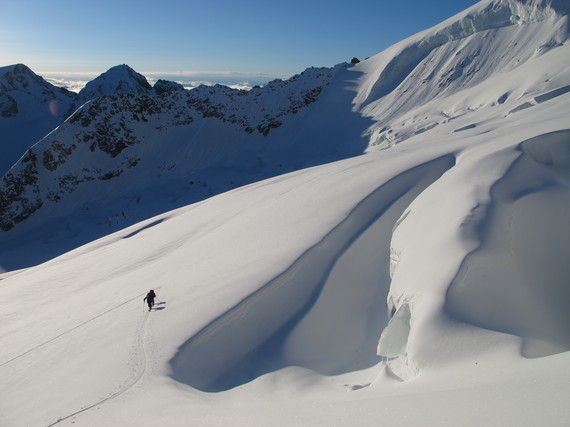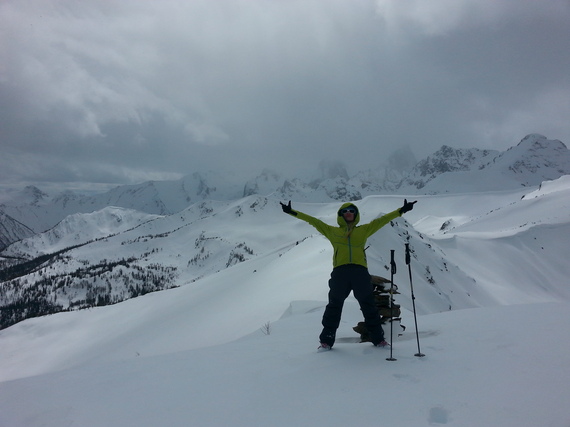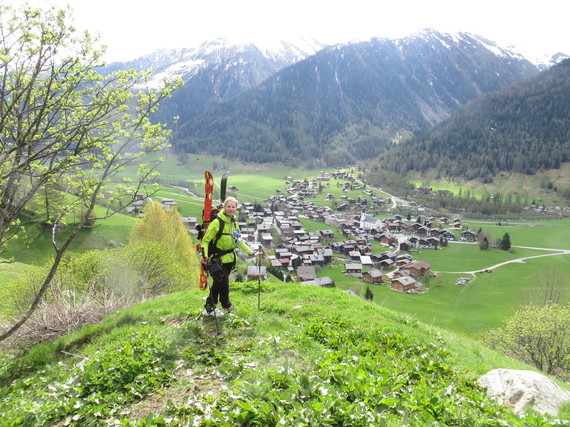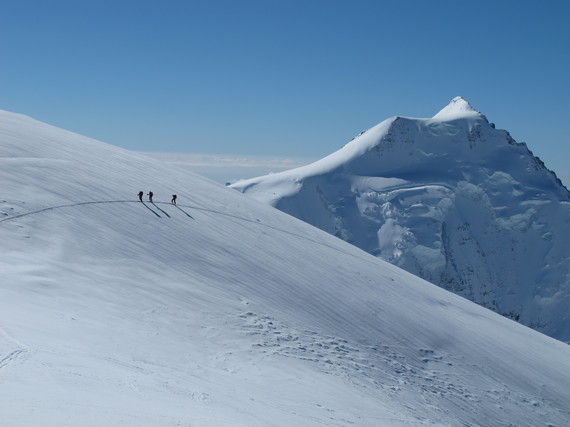Annie Agle tells it like it is:
A few months ago, I awoke to a perfect morning in the Swiss Alps. My partners and I jumped up like kids on Christmas morning, housed the minimal breakfast and were in our skis by 4:30. It was a balmy -6 degrees with a wind chill factor of I-wish-I-had-another-layer as we began tip-toeing up a nearly vertical ice fall on ski crampons. Today's objective, the summit of Galmnihorn, remained coyly elusive, protecting itself with a series of false summits.
Photo by Jeff MacPherson
After two straight weeks of ski mountaineering, my quads had long since given up protesting and submissively, if not willingly, pushed my skis uphill. I snuggled into the hood of my jacket, and cautiously edged up the slope a step at a time. After a particularly hairy kick turn, I looked up to discover that the sun had finally caught up to us and was busy lighting neighboring mountains to their greatest advantage.
This is the best moment of a ski mountaineering day, when each upward step brings you more into the light and climbing literally becomes a means of achieving enlightenment. I upped my tempo and lost myself in hippy-dippy ski-bum thoughts until I finally hit the summit. The view on top was predictably wondrous and afforded sightlines of the entire Mont Blanc Massif but the blood-chilling glacial winds quickly forced us into downhill mode.
I paused briefly to look down the barrel of our line before dropping in. One turn in and I knew this ski was going to be epic. And by epic, I mean awful.
Due to the valley fog, visibility was about five feet and the snow surface was akin to frozen cardboard. Let me qualify by saying, I grew up chasing gates on injected ice. This was worse than any race course and we skied it to valley bottom... a 6,000-plus-foot descent. Oddly, the snow didn't get softer as we went down. The only sign that we were losing altitude was the ever-widening open stream and an increase in the charming decorative scatterings of pebbles and pine cones.
After a lengthy battle, we reached our "exit point" (a Swiss cow path). Upon examining my bases, I was giddy to see that the bottoms of my skis looked like the surface of the moon, and even though I was still wearing my ski boots and gear-laden pack, I traipsed down the hiking path feeling luckier than a leprechaun.
Why would anyone give up the happy comforts of chairlift-assisted skiing for this gem of an experience?
Simple: Earning your turns makes them taste better, no matter how crap the snow. Skiing becomes a way of interacting with a mountain rather than just using it as a ramp (yeah, I am biased... I own it). And, combining ski touring and mountaineering is like an Italian sub -- everything that is awesome in one epic package. Trust me: Ditch the day pass and go on a real adventure. (Added bonuses of backcountry skiing: no lift ticket purchase necessary, great-looking glutes, fresh tracks forever, sure way of building your network of fellow crazy people).
Photo by Mark Houston
How to get started:
- Be honest about your abilities. You should be completely comfortable on black diamonds before heading into the backcountry. Keep in mind: You will be going into terrain that is not under the jurisdiction of any ski patrol and good snow conditions are in no way guaranteed.
